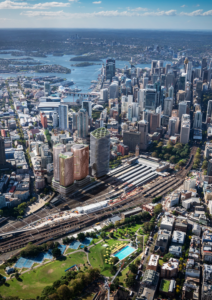New report maps Australia’s emerging ‘Silicon Valleys’
The report, ‘The geography of Australia’s digital industries’, released by CSIRO and the Technology Council of Australia reveals emerging tech hubs in Australia.
| Australia’s digital technology clusters have been mapped and analysed on a national scale for the first time as part of a new report released today by Australia’s national science agency, CSIRO, and the Tech Council of Australia.
The report, ‘The geography of Australia’s digital industries’, explores how the geographical concentration of innovation – like Silicon Valley in California – boosts growth and productivity. The report brings together rich data from across the nation to map and describe the range of digital technology clusters currently developing. It found there are 96 digital clusters across Australia, located in every state and territory. These clusters are engines of growth, accounting for 63 per cent of all tech job creation in Australia, even though they cover only 4 per cent of Australia’s geographic area. The report also found there are three types of clusters in Australia.
CSIRO’s acting Chief Executive Kirsten Rose said that understanding these patterns was important as international research shows their many benefits. “The experience globally has shown that firms in clusters grow, employ and innovate at a faster rate,” she said. “We know comparatively little about this in Australia, but what this report tells us very clearly is that geography matters and understanding that geography can help us catalyse growth.” An aerial view of the Tech Central Innovation District in Sydney, showing future-planned buildings. Image courtesy of the Greater Cities Commission of the New South Wales Government. Lead report author and CSIRO principal researcher Dr Stefan Hajkowicz said the report identified four capital city-based super clusters along the east coast, as well as significant, but smaller clusters in places like Perth, Hobart and Darwin. “The report has also noted the rise of highly specialised clusters in regional areas, for example we are seeing the rapid growth of the graphic design profession in coastal areas like Burleigh Heads,” Dr Hajkowicz said. “We’re not searching for Australia’s Silicon Valley, we have our own clusters with their own unique blend of technology specialisations, companies, and cultures. “But we do see the same patterns of intense spatial clustering of technology industry occurring in places like California (USA), Cambridge (UK), Toulouse (France) and other places worldwide.” Australia also has 60 greater city clusters, which are single clusters in greater capital city areas that have large and diversified tech workforces and companies. This includes areas such as Parramatta, Hobart, Northbridge in Perth, Darwin and Adelaide. Tech Council of Australia CEO Kate Pounder said the 36 regional specialist clusters – which includes Noosa, Newcastle, Queanbeyan, Geelong and Torquay – proves that digital innovation can happen anywhere in Australia. These clusters are in regional areas and have significant tech workforces which often specialise in one or two areas. ”This research shows that great ideas and industries can spring up anywhere in Australia,” Ms Pounder said. “It’s an incredible achievement as a nation to have 96 different clusters spread around the country creating jobs and opportunity for a range of communities and workers. “Giving a range of communities access to this opportunity is vital as this report highlights the benefits for communities of being in a cluster. “Clusters account for 63 per cent of tech jobs in Australia. “Given tech jobs are amongst the fastest-growing, best-paid and most flexible jobs in the country, it’s a great advantage for any community to have a cluster in their area.” she said. To learn more, read the report here. |




